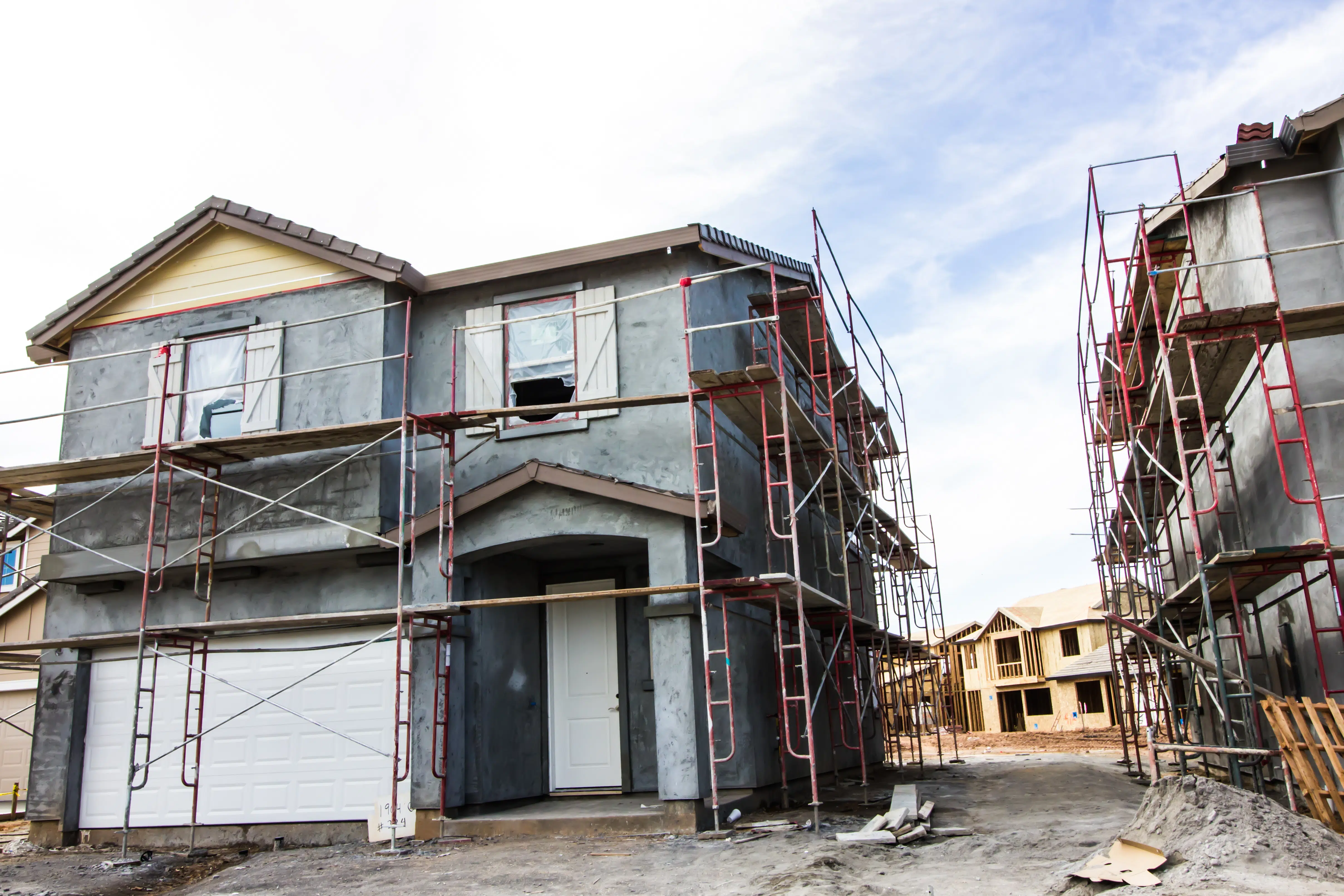While there are several parts of the North America where stucco always has a strong presence, there appears to be a general renewed interest in portland cement plaster for building finishes everywhere. We are often asked if stucco and plaster are the same thing, and if plaster and exterior insulation finishing systems (EIFS) are the same thing.
The answer requires a thorough explanation. Plaster is the general term for material that is applied to a wall surface in a thin layer. Portland cement-based plaster is such a material that uses portland cement as the binder. It is sometimes called “traditional stucco.” Stucco is a somewhat colloquial term for portland cement plaster, and some people consider it to refer to an exterior, not interior, finish. Exterior insulation and finish system is sometimes (incorrectly) called “synthetic” stucco. To complicate matters, “plastering” is the verb that describes the action of applying any of these various materials to a wall surface.
Portland cement plaster is applied either by hand or machine to exterior and interior wall surfaces in two or three coats. It may be applied directly to a solid base such as masonry or concrete walls, or it can be applied to metal lath attached to frame construction, solid masonry, or concrete construction. Applied directly to concrete masonry, portland cement plaster provides a tough ½-inch thick facing that is integrally bonded to the masonry substrate. When applied to metal lath, three coats of plaster form a 7/8-inch total thickness. A vapor permeable, water-resistant building paper separates the plaster and lath from water-sensitive sheathing or framing. Portland cement plaster has high impact resistance and sheds water, but breathes, allowing water vapor to escape. It’s a proven system that works in all climates.
Exterior insulation finishing systems (EIFS) consist of a polymer-based laminate that is wet applied, usually in two coats, to rigid insulation board that is fastened to the wall with adhesive, mechanical fasteners, or both. Polymer based (PB) systems, sometimes known as thin coat, soft coat, or flexible finishes, are the most common. The base coat for polymer based systems is usually 1/16-inch thick and finish coat thickness is typically no thicker than the maximum sand particle size in the finish coat.
Exterior insulation finishing systems experienced performance problems in the 1990s, including water leakage and low impact resistance. While the polymer based skin repels water very effectively, problems arise when moisture gets behind the skin—typically via window, door, or other penetrations—and is trapped inside the wall. Trapped moisture eventually rots insulation, sheathing, and wood framing. It also corrodes metal framing and metal attachments. There have been fewer problems with EIFS used over solid bases such as concrete or masonry because these substrates are very stable and are not subject to rot or corrosion.
Clearly, portland cement plaster should not be confused with the exterior insulation and finish systems. The systems may share similarities in application techniques or final appearance, but the systems perform differently in resisting weather, especially wet conditions.
Cracked Brick and Stucco Repair from CDP Stucco
CDP Stucco has repaired cracked stucco for homeowners throughout Florida. If you are unsure if the cracks indicate foundation failure, a representative from CDP Stucco can provide an inspection to give you back peace of mind.
Contact us today for an inspection of your cracked stucco repair! If you are interested in Stucco Installation or Stucco Repair, call the experts at CDP Stucco now at 850-259-2283

